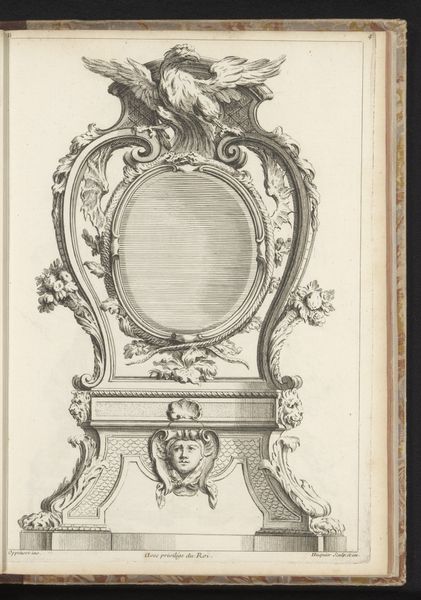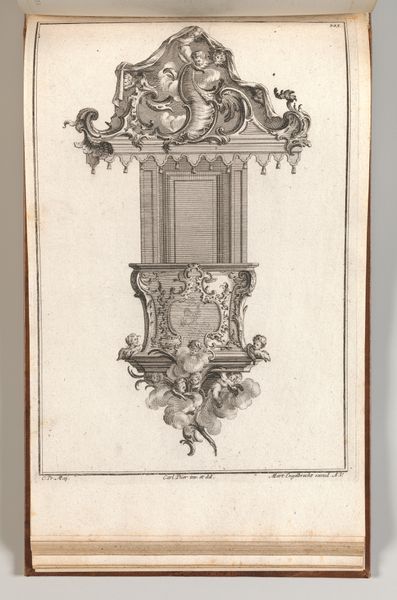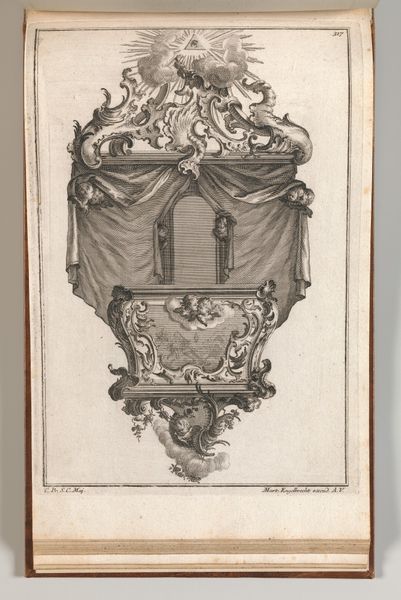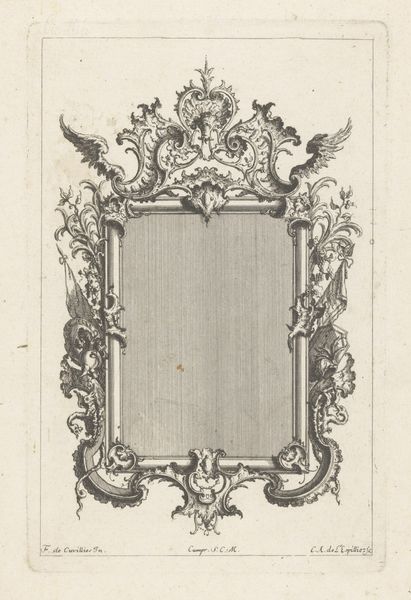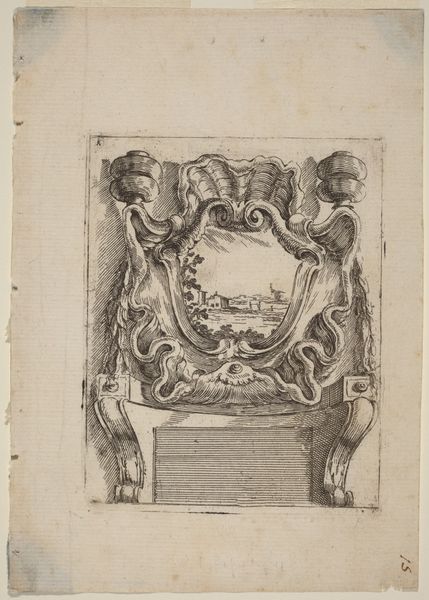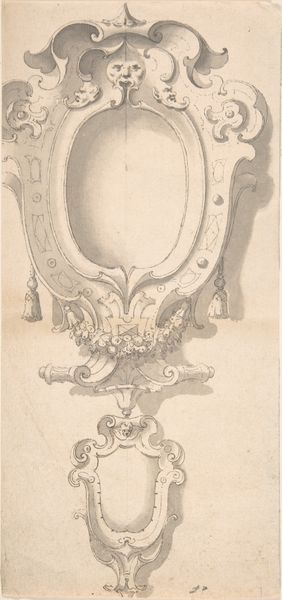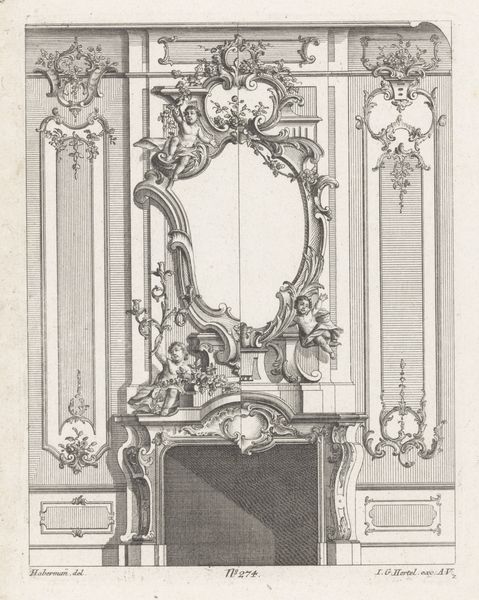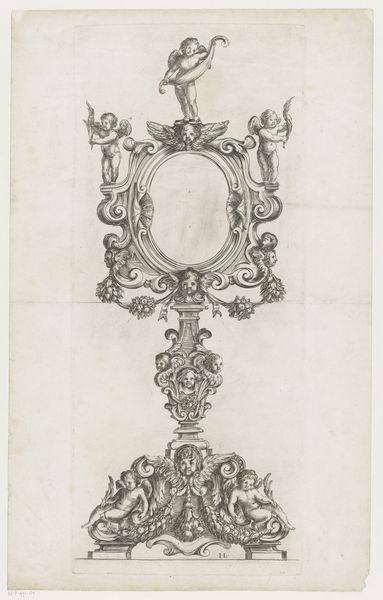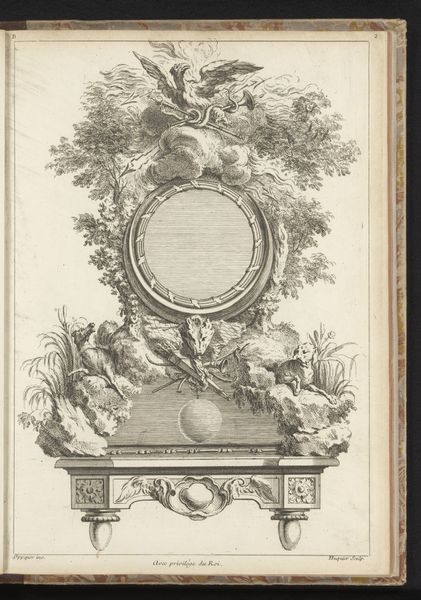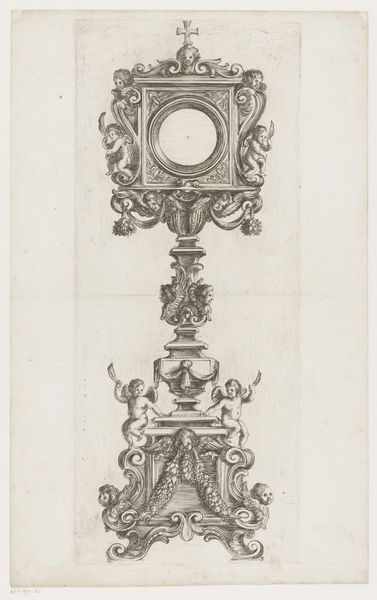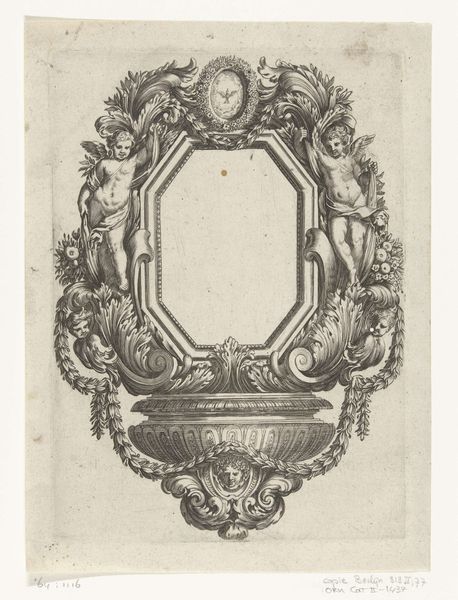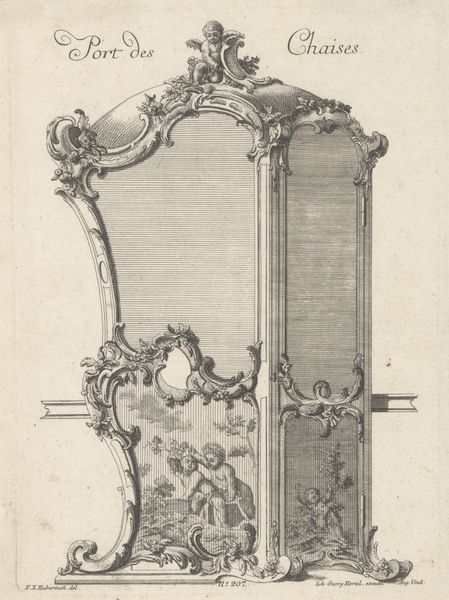
Ontwerp voor een klok met leeuwenkoppen en twee putti met een fakkel c. 1725 - 1750
0:00
0:00
gabrielhuquier
Rijksmuseum
drawing, engraving
#
drawing
#
baroque
#
form
#
line
#
engraving
Dimensions: height 324 mm, width 242 mm
Copyright: Rijks Museum: Open Domain
Curator: This is a striking design for a clock, likely conceived sometime between 1725 and 1750. It’s titled, “Ontwerp voor een klok met leeuwenkoppen en twee putti met een fakkel,” which translates to "Design for a clock with lion heads and two putti with a torch.” This is a drawing by Gabriel Huquier, currently held in the Rijksmuseum. What are your initial thoughts? Editor: Monumental. The interplay of the circular and rectangular forms is immediately captivating. It’s a bold, graphic piece, but also playful with those swirling, ornate details. Curator: Those "swirling, ornate details," as you put it, are characteristic of the Baroque style. The drawing's strong lines capture not just a clock but a statement. Lions were potent symbols of power and courage. Then, topping the clock, you have the putti—cherubic figures representing divine love and innocence. They add a softer, spiritual dimension to the design. The torches suggest enlightenment. Editor: Yes, the symbolism is layered and intriguing. But consider how the composition leads the eye. The artist has anchored it with the weight of those powerful lions, visually drawing upward through increasingly delicate ornamentation towards those light-hearted figures on top. There’s such a balance between strength and frivolity, darkness and light, achieved just through line and form. Curator: And perhaps this balance reflects the function of the clock itself—a measured harmony between fleeting moments and the enduring presence of time. The piece itself, though, existing only in engraving, is evidence of a lost maker who hoped his symbolic order would become more concrete, part of cultural memory. Editor: Absolutely. The piece offers a rich tapestry of visual delight. Ultimately, it exemplifies the power of design to evoke deeper emotions and interpretations. It's really much more than an idea for telling time, isn't it? Curator: Yes, indeed. In viewing it, we understand how symbolism embedded in visual representation allows art to outlive intention. The drawing remains relevant centuries later.
Comments
No comments
Be the first to comment and join the conversation on the ultimate creative platform.
